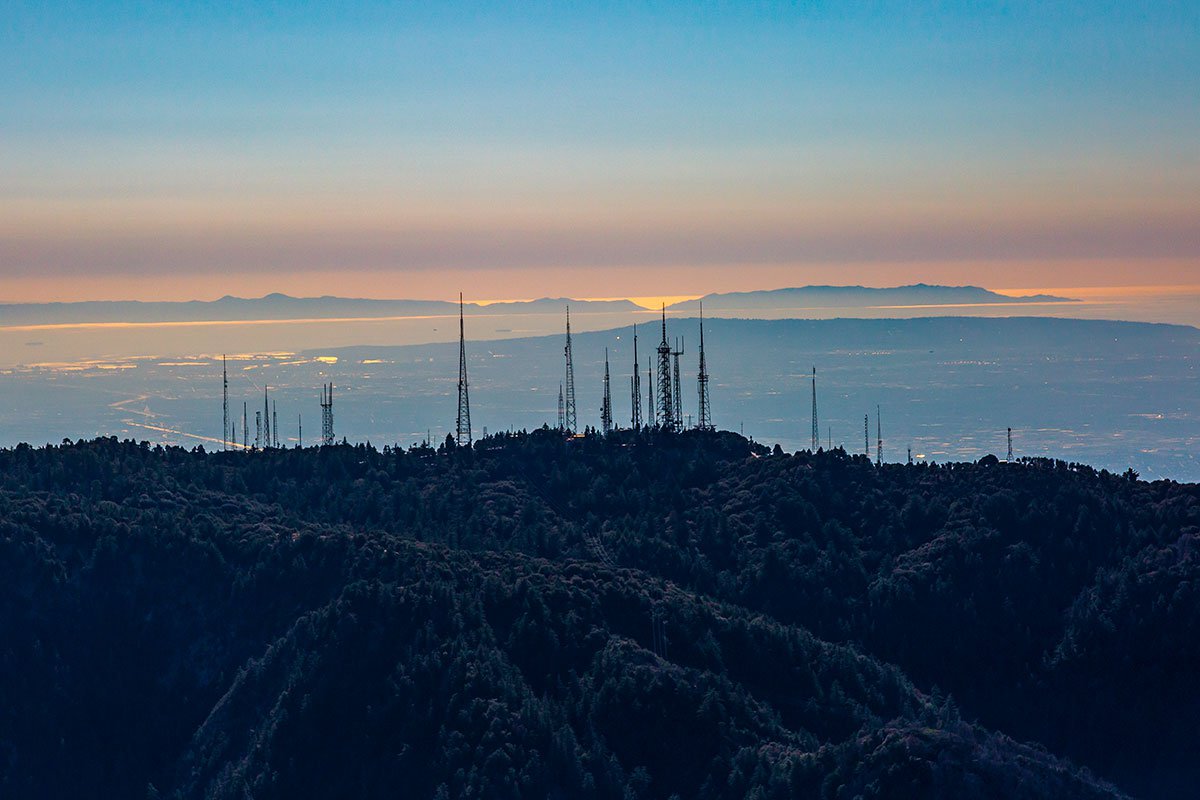
Nestled in the San Gabriel Mountains of California, the Mount Wilson Observatory stands as a testament to the wonders of modern astronomy. This historic site has been home to groundbreaking discoveries, innovative telescope designs, and the passion of the astronomers who dared to explore the cosmos.
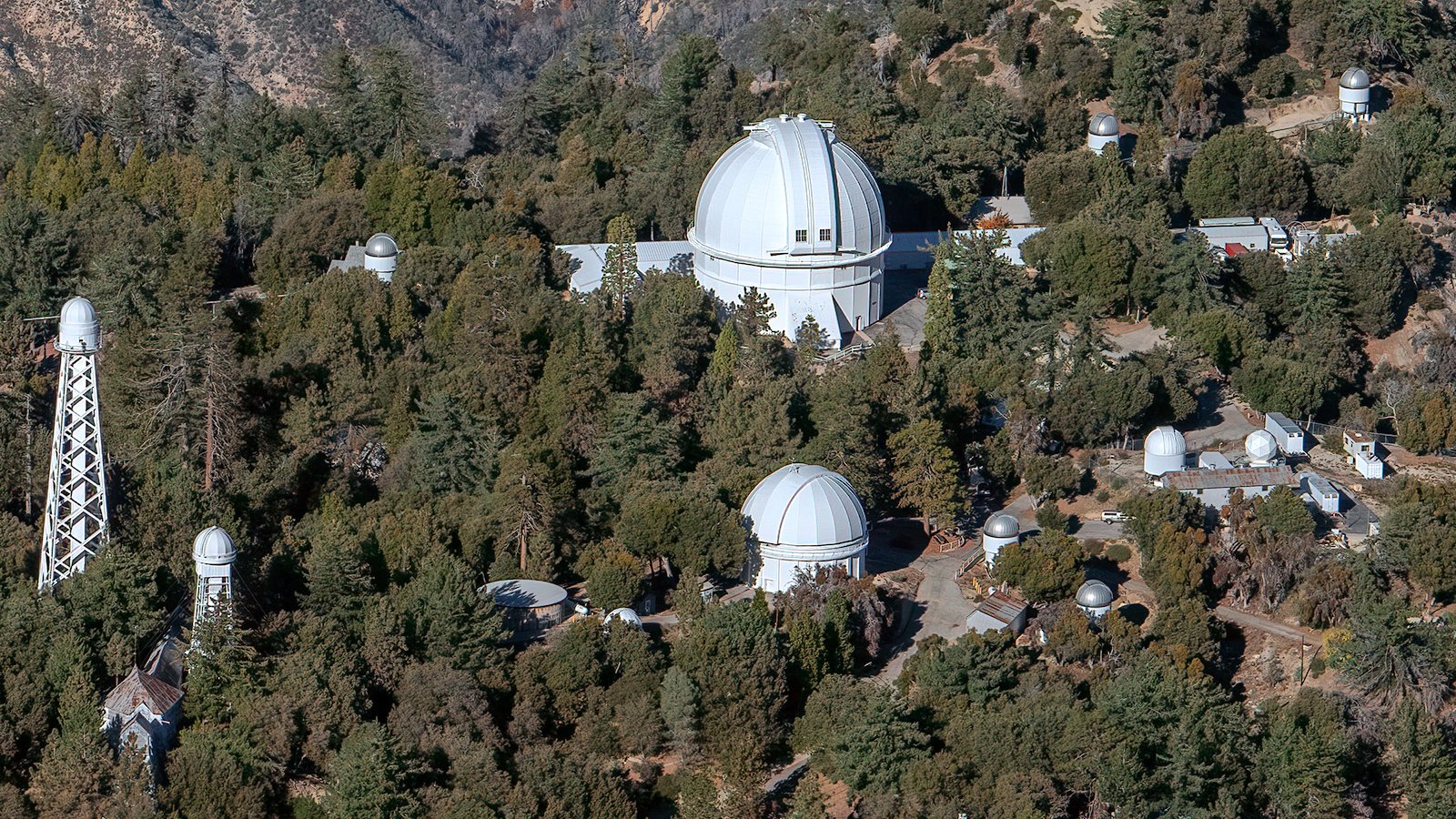
The iconic 100-inch Hooker telescope, completed in 1917 at Mount Wilson Observatory, California, was used by Edwin Hubble to prove the expansion of the universe and the existence of galaxies beyond the Milky Way.
The History of Mount Wilson Observatory
Founded by visionary astronomer George Ellery Hale in the early 20th century, the Mount Wilson Observatory has played a pivotal role in the development of modern astronomy. Since its founding, the observatory has received significant backing from the Carnegie Institution, which generously funded the construction of what was then the world’s largest telescope, the 100-inch Hooker telescope.
Perched atop the San Gabriel Mountains, the observatory’s location offers a unique vantage point for studying the cosmos, with darker skies and reduced light pollution.
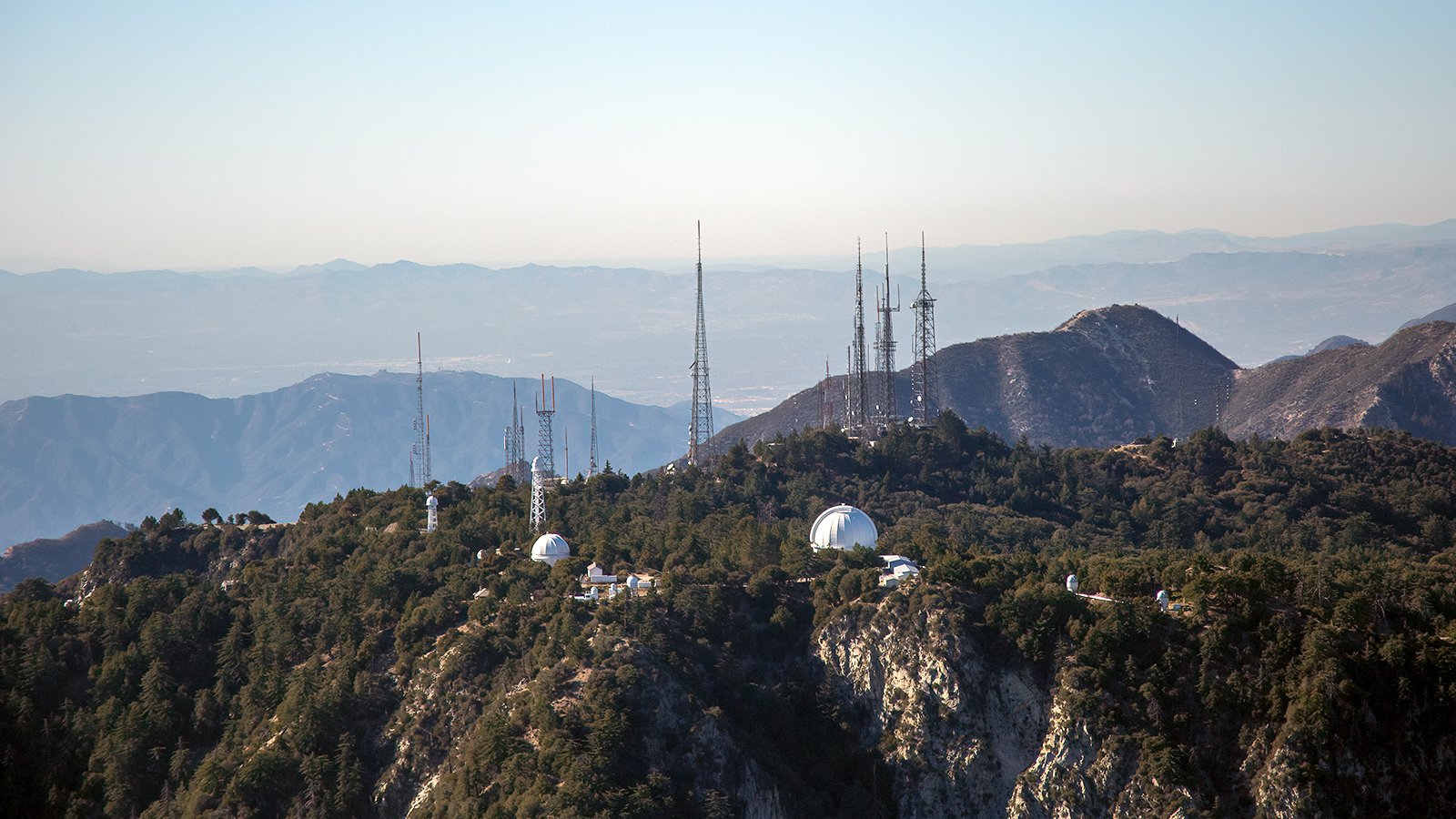
Aerial view of the Mount Wilson Observatory, featuring the historic 100-inch Hooker telescope alongside the still-productive CHARA array and several solar towers, set against a picturesque backdrop of the San Gabriel Mountains.
George Ellery Hale
George Ellery Hale, the visionary behind Mount Wilson Observatory, achieved numerous remarkable feats and contributed greatly to the development of modern astronomy.
Hale’s choice of Mount Wilson as the site for his observatory was no coincidence. He recognized the area’s potential for astronomical observations and envisioned the installation of the primary mirror for the 100-inch Hooker telescope. His visionary planning and unwavering commitment paved the way for the observatory’s success, securing its spot in the history of astronomy.
The Carnegie Institution
The Carnegie Institution’s involvement in the Mount Wilson Observatory cannot be overstated. Since 1904, it has bestowed financial support and resources, making possible the construction of the revolutionary 100-inch Hooker telescope. Their $500,000 investment not only enabled the observatory’s expansion, but also furthered astronomical research and discoveries at the Mount Wilson Institute.
The Institution’s backing has been vital to the observatory’s growth and the creation of a southern solar observatory. They also provided grants for research and development, helping the observatory to sustain its advanced capabilities and augment our growing knowledge of the cosmos.
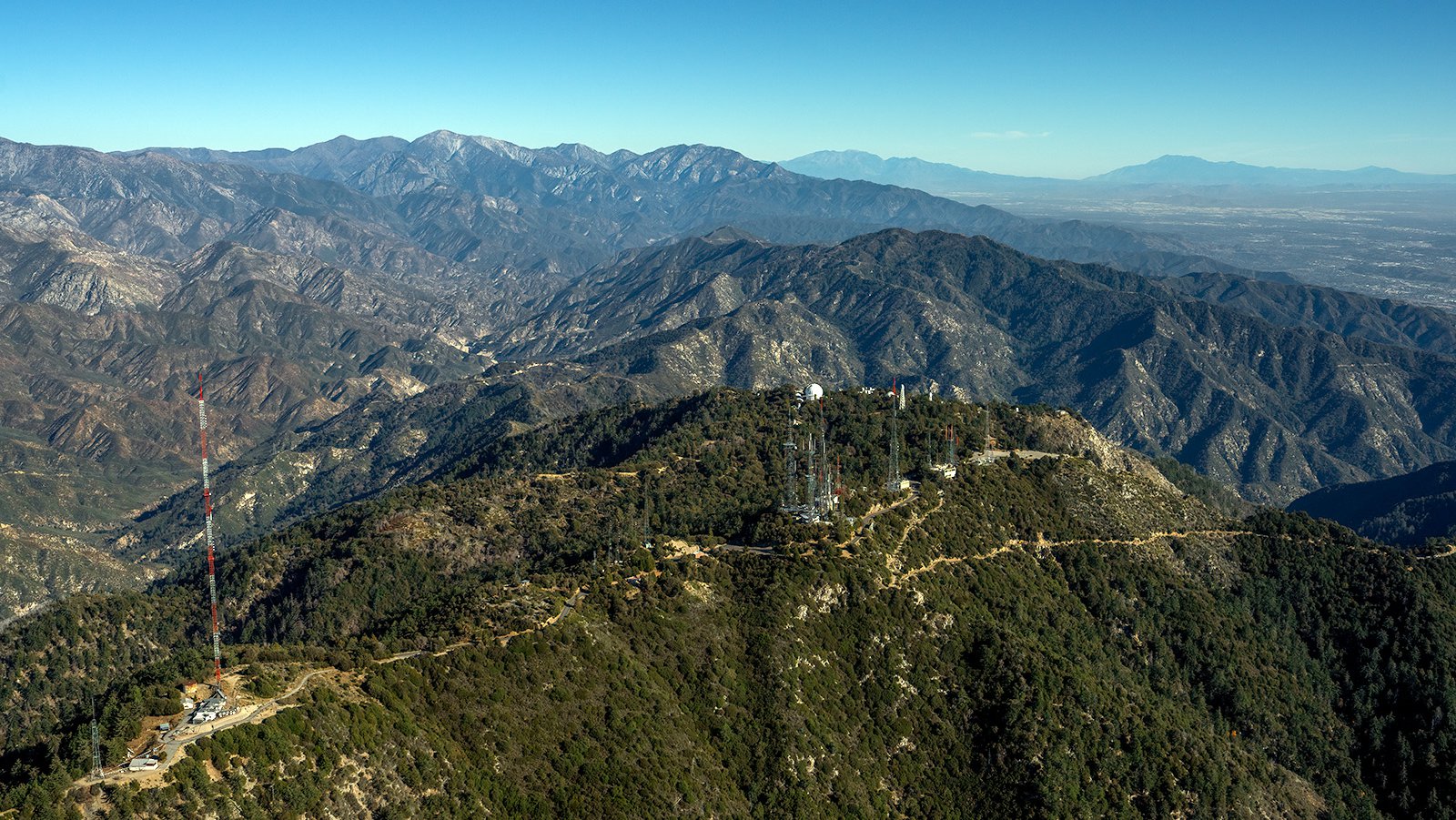
The 100-inch Hooker telescope and the 60-inch telescope against the backdrop of the San Gabriel Mountains, providing the ideal conditions for astronomy due to the inversion layer that creates the steadiest air of any location in North America, a crucial advantage for deep space research.
San Gabriel Mountains
The San Gabriel Mountains, with their stunning landscape and rugged terrain, provide the ideal location for the Mount Wilson Observatory. Situated at the summit of 5,713-foot Mt. Wilson, the observatory is only accessible via the winding stretch of Angeles Crest Highway. This remote setting offers a serene environment, away from the hustle and bustle of Los Angeles, allowing astronomers to focus on the wonders of the universe.
Several key geological features of the San Gabriel Mountains contribute to the observatory’s success: the steep terrain helps minimize light pollution, creating darker skies for clearer observations; and the proximity to the San Andreas Fault provides a stable base for telescopes, reducing vibrations and disturbances. The combination of darker skies and diminished atmospheric disturbance enables more detailed observations, making the observatory a key center for astronomical study.
Solar Telescopes at Mount Wilson Observatory
Mount Wilson Observatory is famed for its extensive collection of solar telescopes, which, over time, have offered unrivaled insights into the workings of our closest star. From the groundbreaking Snow Solar Telescope to the imposing 150-foot Solar Tower, these instruments have enabled significant discoveries in solar research, illuminating phenomena such as solar rotation, sunspot polarities, and magnetic fields.
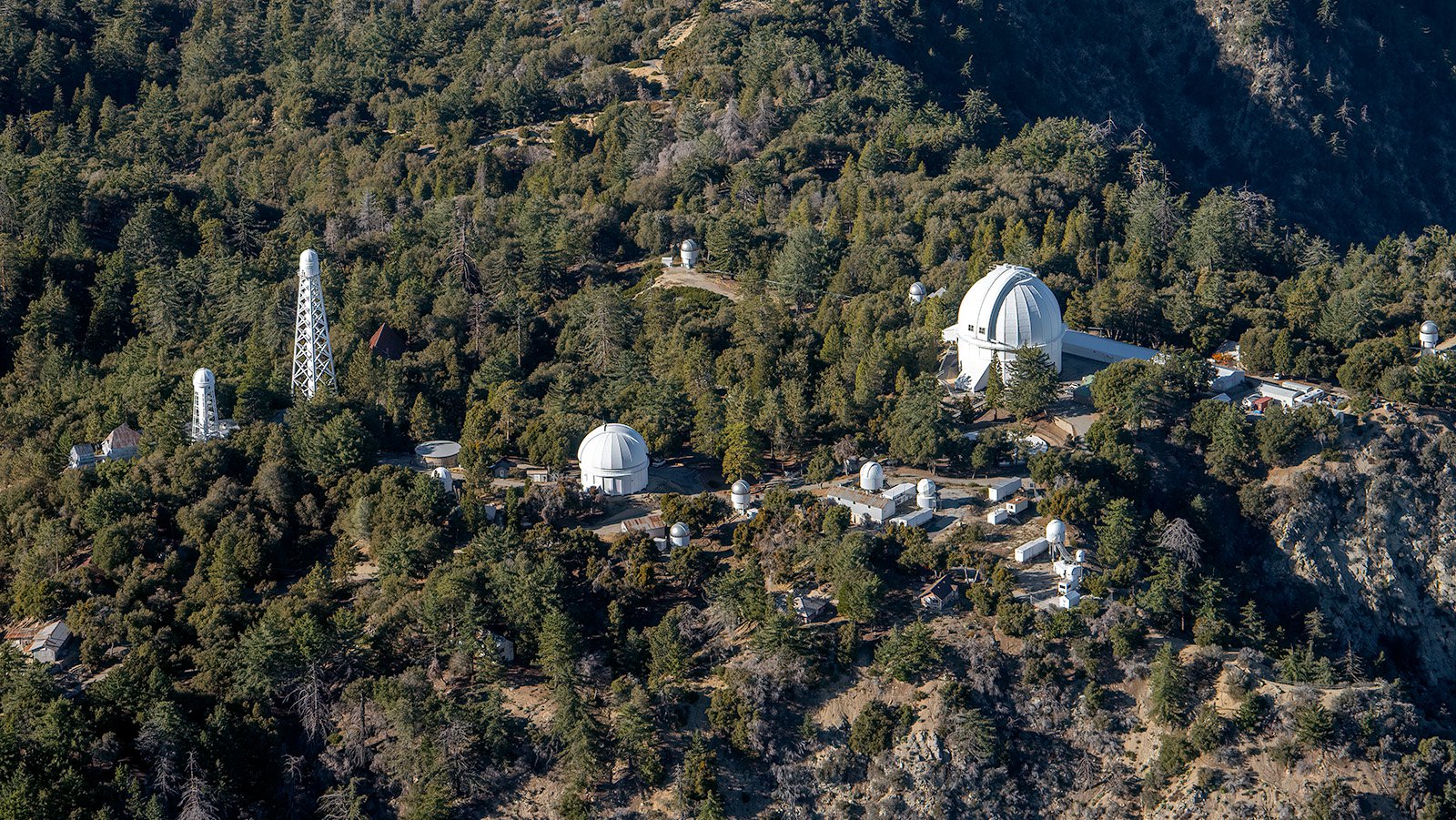
The Mount Wilson Observatory boasts several historically significant telescopes, including the 100-inch Hooker and 60-inch telescopes, as well as the Snow solar telescope, the 60 and 150-foot solar towers, and the cutting-edge CHARA array.
The Evolution of Solar Telescopes
The development of solar telescopes at Mount Wilson began with the Snow Solar Telescope, which employed a coelostat to collect sunlight and study the sun and sunspots. This initial instrument paved the way for the construction of the 60-foot Solar Tower, which featured a vertical tower design and enhanced light collecting mirrors to reduce heat distortion.
Finally, the 150-foot Solar Tower was built, boasting a tower-in-a-tower design that allowed for a longer focal length and increased capabilities, pushing the boundaries of solar research.
Key Discoveries
Mount Wilson’s solar telescopes have been vital in unraveling the enigmas of the sun. The Snow Telescope, for instance, played a crucial role in discovering the solar rotation through the observation of sunspots. Furthermore, the 60-foot Solar Tower enabled researchers to identify swirling configurations and magnetic fields in sunspots, significantly enhancing our understanding of solar activity and its effects on Earth.
These groundbreaking instruments have genuinely transformed our understanding of the sun and its activities.
Groundbreaking Telescopes: 60-inch and 100-inch Hooker Telescopes
The 60-inch and 100-inch Hooker telescopes at Mount Wilson Observatory stand as towering achievements in the field of astronomy. These groundbreaking instruments have not only provided unprecedented views of the cosmos but have also paved the way for numerous astronomical discoveries, from the nature of galaxies to the expansion of the universe.
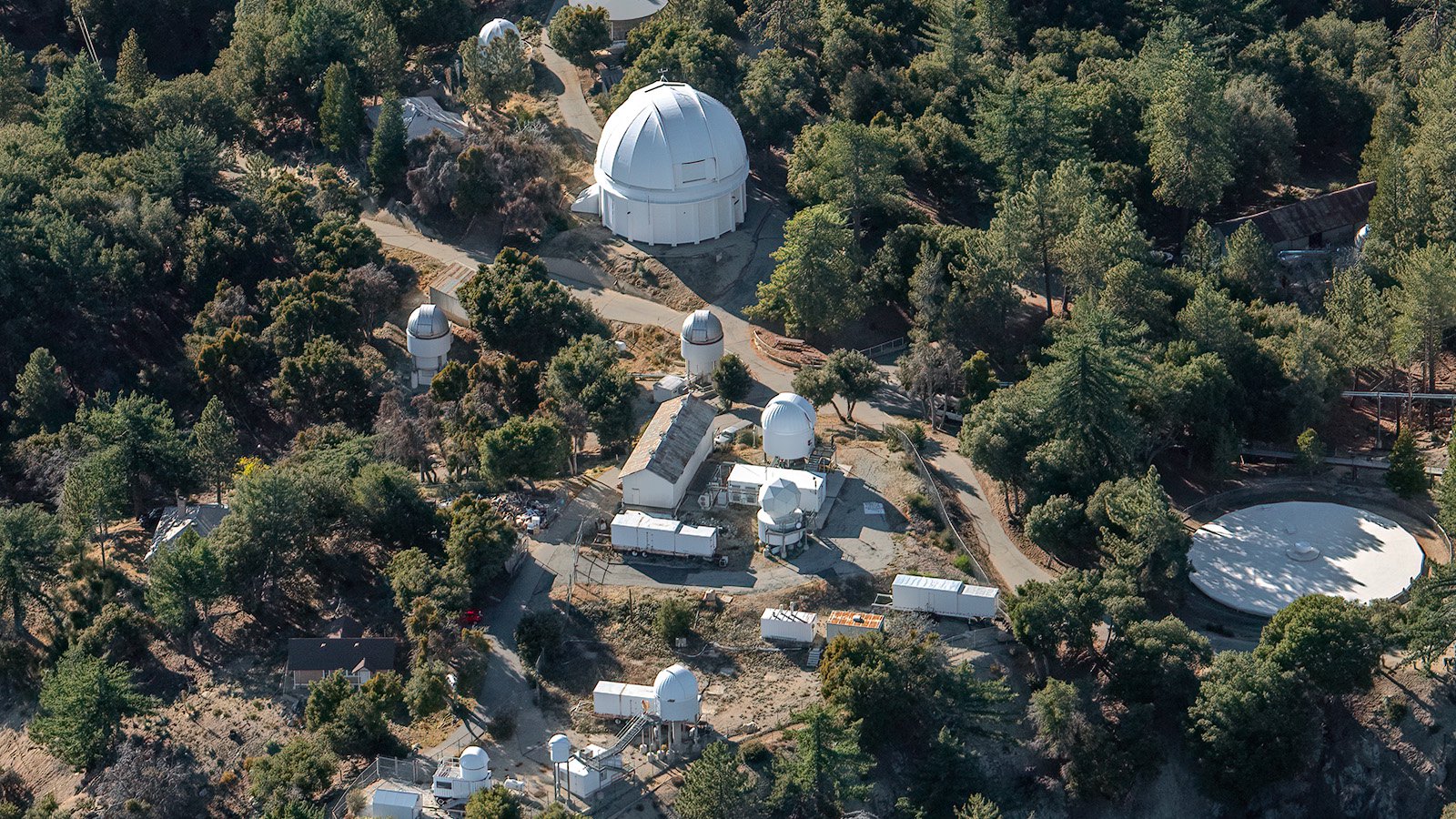
The 60-inch telescope at Mount Wilson Observatory, completed in 1908 after two years of grinding and surviving the 1906 earthquake, was the largest operational telescope in the world at the time and still stands as a historic landmark for astronomical observation.
The 60-inch Telescope
The 60-inch telescope was a marvel of engineering and craftsmanship in its time. Utilizing Ritchey optics and a 58-foot steel dome, this impressive instrument began operation on December 13, 1908, marking a new era of astronomical observation.
Throughout its storied history, the 60-inch telescope has been instrumental in advancing our understanding of the cosmos. Notably, it played a key role in the discovery of the magnetic field in sunspots and the realization that our solar system is not centered in the Milky Way. This potent telescope continues to kindle inspiration and offer knowledge as astronomers investigate the enigmas of the universe, including the Andromeda Galaxy, also known as a spiral nebula.
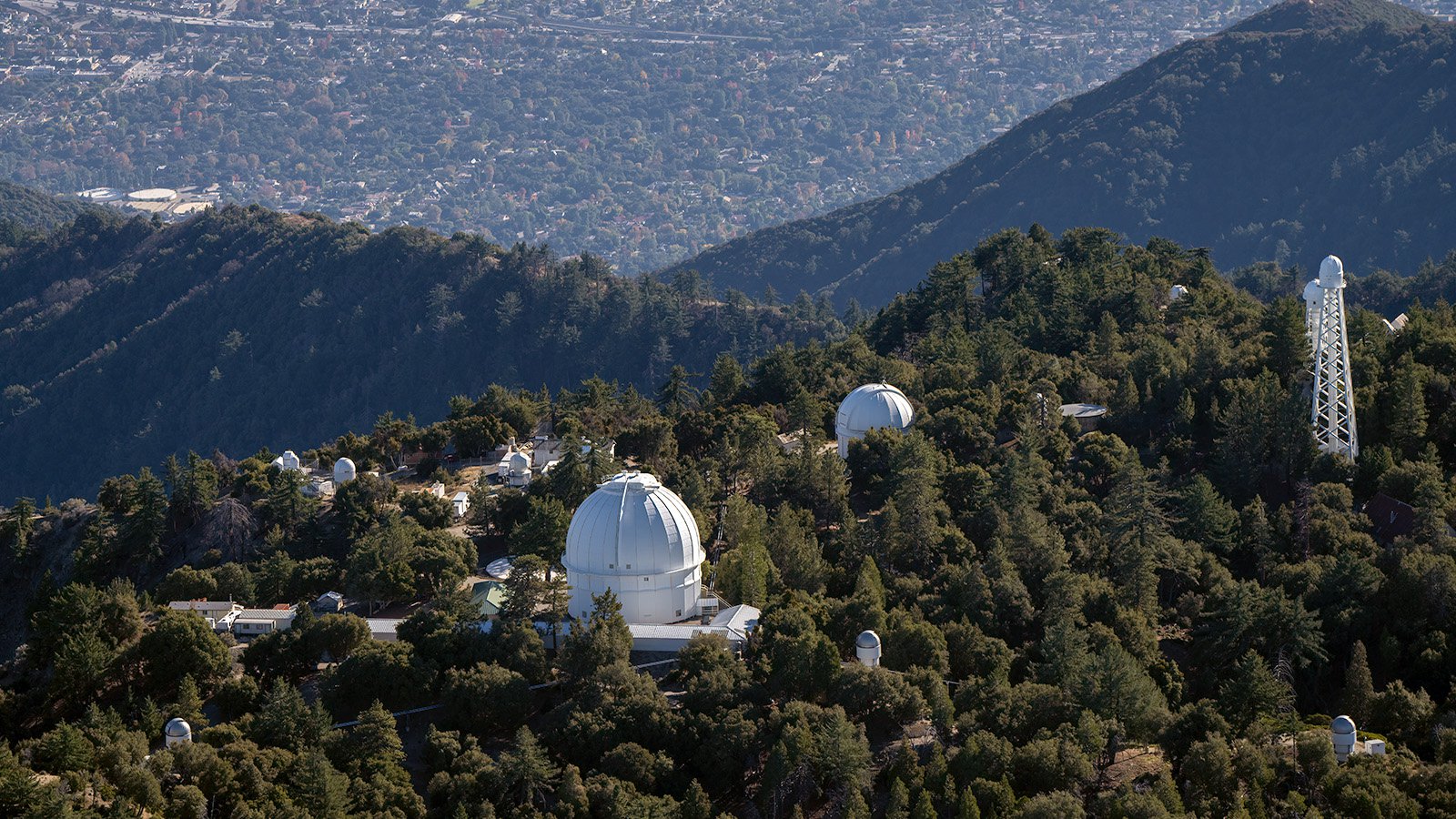
The 100-inch Hooker telescope, completed in 1917 and located at the Mount Wilson Observatory, was the world's largest telescope until 1949 and was famously used by Edwin Hubble to prove that the Universe extends beyond the Milky Way and that it was expanding.
The 100-inch Hooker Telescope
The brainchild of George Ellery Hale, the 100-inch Hooker Telescope was the world’s largest telescope until 1949. With financial support from Andrew Carnegie, this colossal instrument was developed to push the boundaries of astronomical research, enabling scientists to peer deeper into the cosmos than ever before.
Perhaps the most famous astronomer to utilize the 100-inch Hooker Telescope was Edwin Hubble, whose groundbreaking discoveries forever changed our understanding of the universe. Using this remarkable instrument, Hubble demonstrated that objects such as Andromeda were entire galaxies outside the Milky Way and identified a linear relationship between the distances of galaxies and their speed of recession from Earth. These key findings established the groundwork for our present understanding of an expanding universe.
The Power of Interferometry
Interferometry, a technique that uses multiple viewing points to amplify resolution, has transformed astronomical observations at Mount Wilson Observatory. From the early days of the 20-foot and 50-foot stellar interferometers to the advanced capabilities of the Infrared Spatial Interferometer and CHARA Array, this powerful technique has enabled astronomers to measure minute details, such as star diameters, with unprecedented precision.
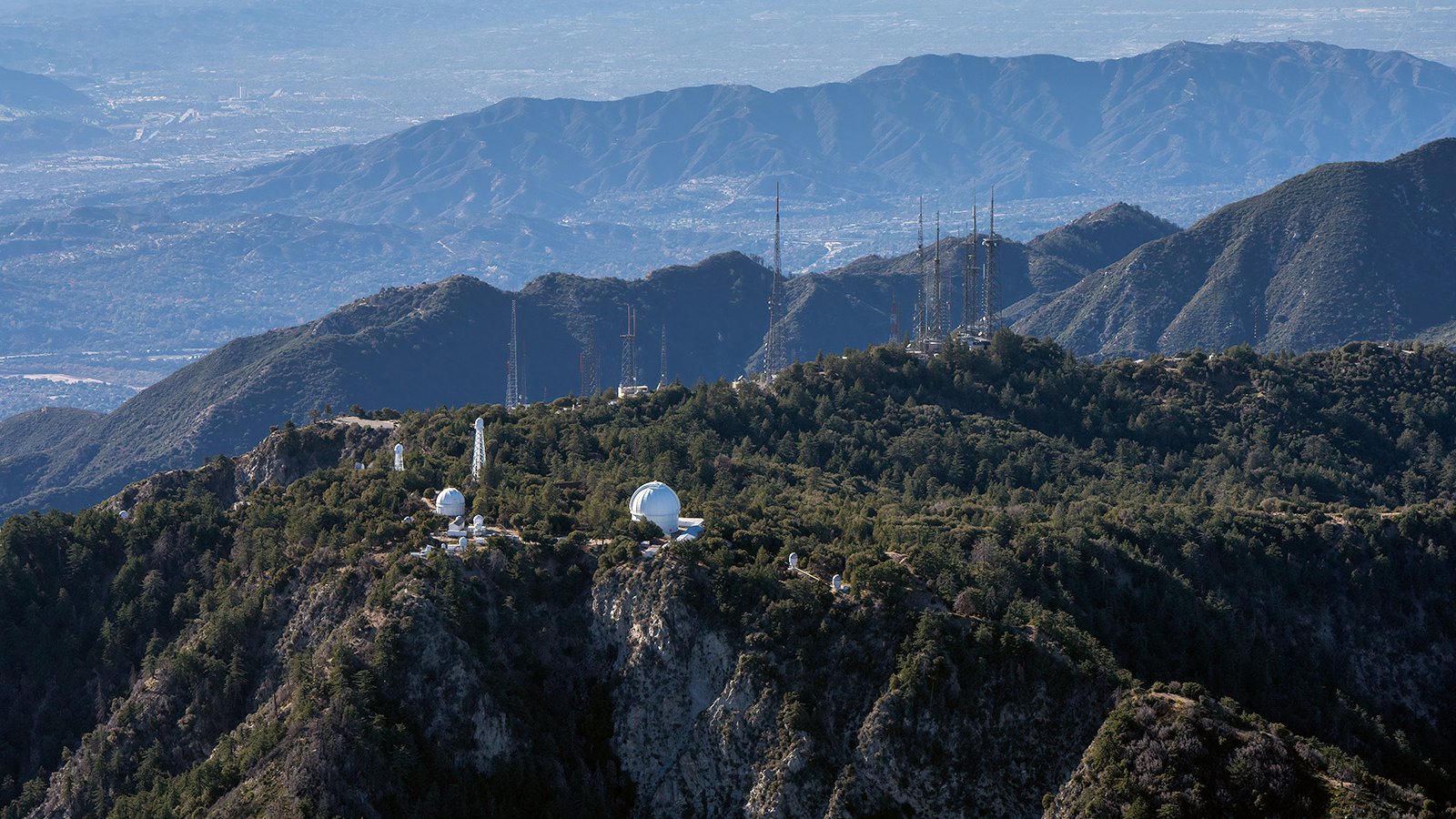
Aerial photo of the Mount Wilson Observatory, with its historic 100-inch Hooker and 60-inch telescopes, as well as the CHARA array, and the adjacent Radio Ridge Antenna Farm, situated atop a peak in the San Gabriel Mountains offering rare steady air for deep space astronomy.
Stellar Interferometers
Developed by Albert A. Michelson and Francis G. Pease, the 20-foot Stellar Interferometer at Mount Wilson Observatory was the first of its kind, utilized to determine the precise diameter of stars, such as the red giant Betelgeuse. Building upon this success, the 50-foot Stellar Interferometer was designed to expand on the work of its predecessor, though it faced limitations in measuring stars already observed by the 20-foot instrument. Despite this setback, these pioneering instruments marked the beginning of a new era in high-resolution astronomical imaging.
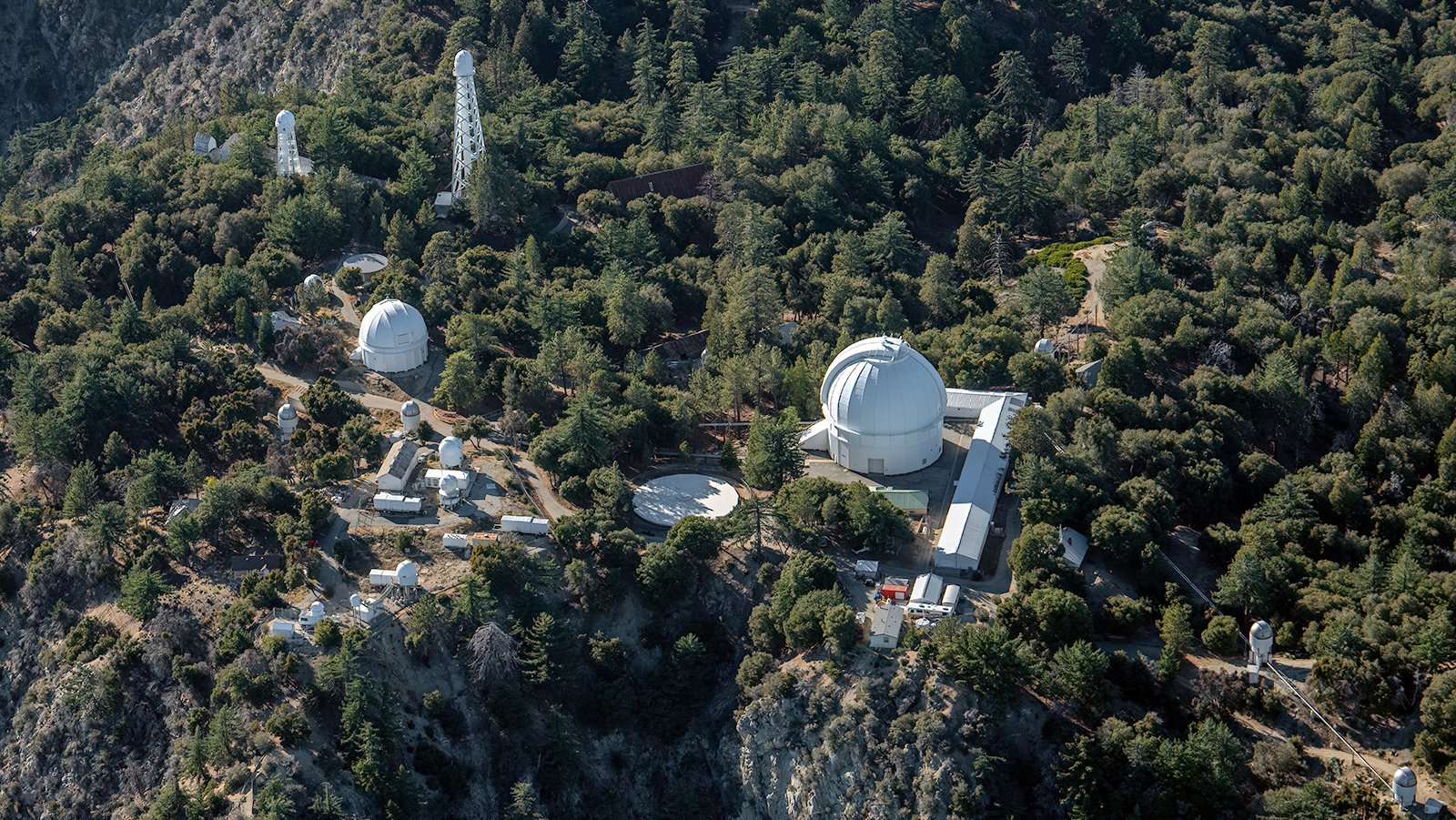
Close-up aerial view of the Mount Wilson Observatory shows the historic 100-inch Hooker telescope and the 60-inch telescope, as well as the newer CHARA array, which is the largest optical interferometer in the world and is used for important stellar research.
Infrared Spatial Interferometer and CHARA Array
The Infrared Spatial Interferometer and CHARA Array at Mount Wilson Observatory represent the cutting edge of interferometric technology. The Infrared Spatial Interferometer, an array of three 1.65-meter telescopes operating in the mid-infrared, can resolve details down to 0.003 arcsec at a wavelength of 11 micrometers. The CHARA Array, composed of six 1-meter telescopes arranged along three axes with a maximum separation of 330 meters, boasts an even higher resolution of 0.0005 arcseconds in the infrared. These advanced tools persist in challenging the boundaries of high-resolution astronomical imaging, offering priceless revelations about the cosmos and deep sky objects.
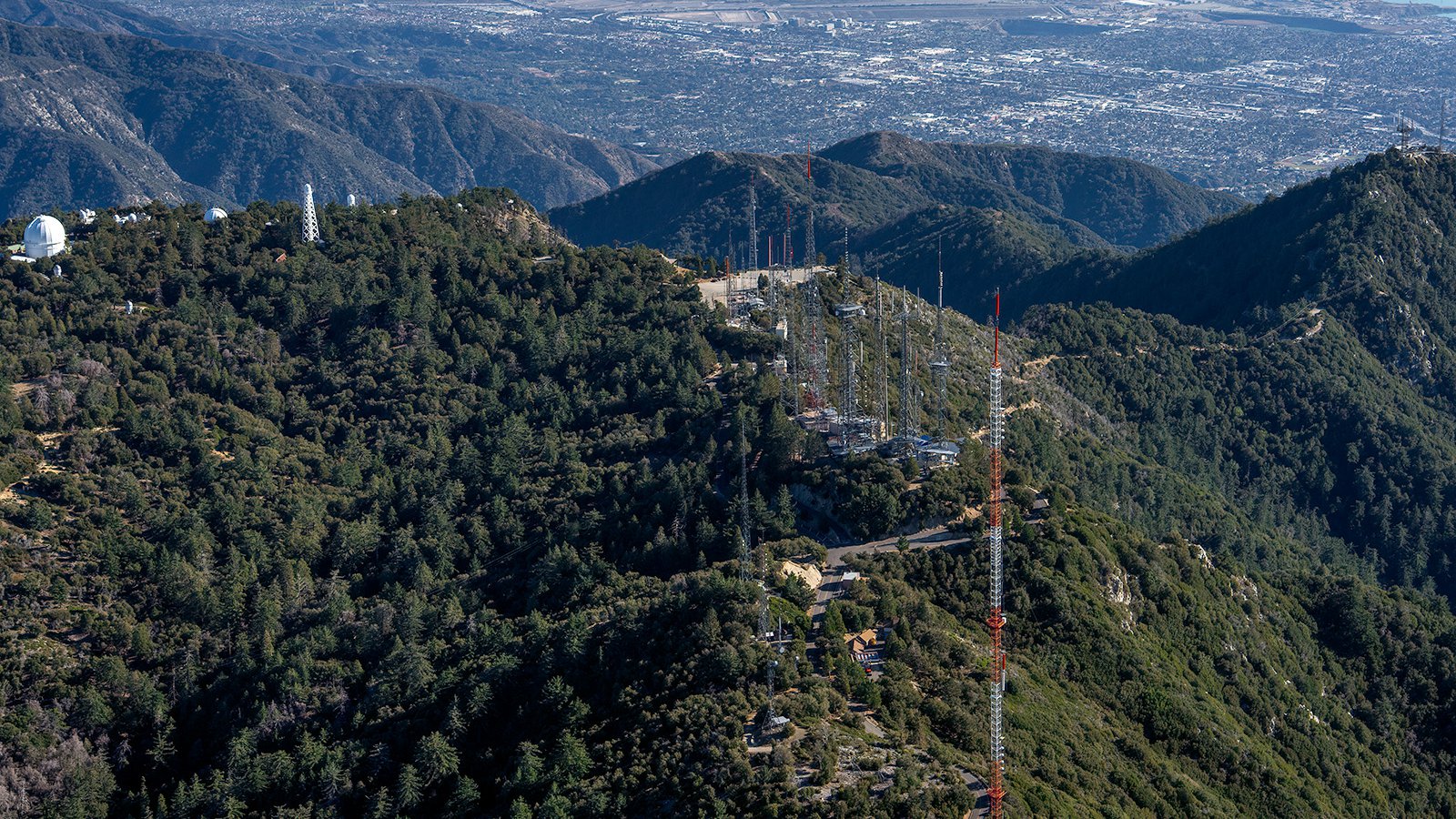
The Mount Wilson Observatory's Radio Ridge Antenna Farm, consisting of numerous radio telescopes, serves as a crucial component in modern-day astronomical research, enabling scientists to study the universe beyond the visible spectrum.
Additional Telescopes at Mount Wilson Observatory
Beyond the iconic solar, Hooker, and interferometric telescopes, Mount Wilson Observatory also hosts a variety of other instruments, each contributing uniquely to the exploration of the universe. These additional telescopes, such as the 61 cm telescope equipped with an infrared detector, have played a crucial role in expanding our understanding of the Milky Way and beyond.
Eric Becklin, an astronomer who employed the 61 cm telescope, made significant contributions to the study of the Milky Way. In 1968, he conducted a groundbreaking scan of the central parsecs of the Milky Way, providing invaluable insights into the structure and composition of our galaxy.
Persistently utilizing these varied instruments ensures that Mount Wilson Observatory stays at the cutting edge of astronomical research and discovery.
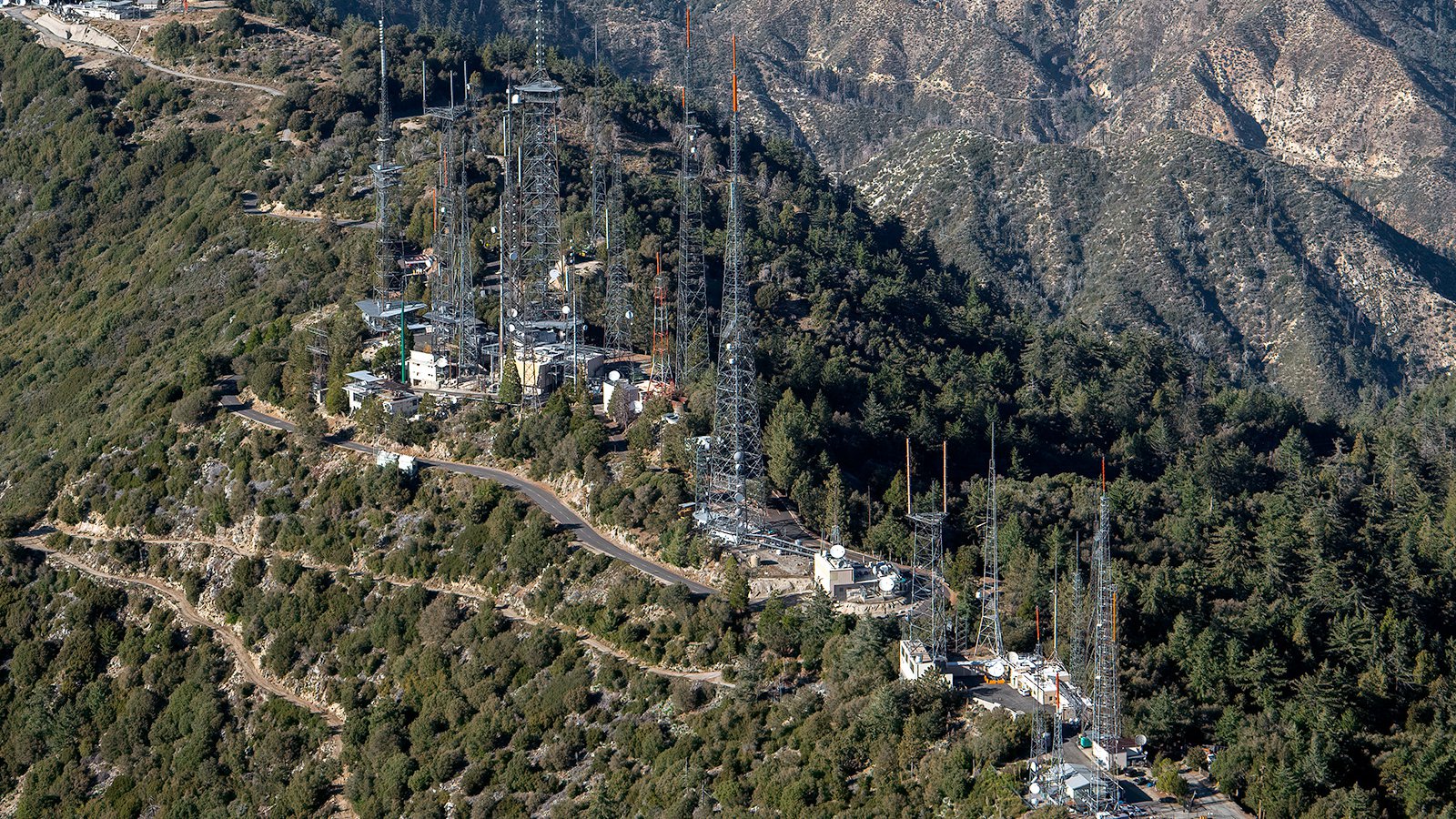
Close-up aerial image of the Mount Wilson Radio Ridge Antenna Farm, which is home to more than two dozen radio telescopes used for radio astronomy and communication research.
Mount Wilson Radio Ridge Antenna Farm
The Mount Wilson Radio Ridge Antenna Farm, often overlooked due to the prominence of the site's famous optical telescopes, plays a crucial role in modern astronomy and telecommunications. It hosts a conglomeration of transmission towers that are key to broadcasting signals over the Los Angeles basin due to its elevation of over 5,000 feet and unobstructed view of the city. From a radio astronomy perspective, the antenna farm aids in the study of celestial bodies by capturing radio waves emitted by distant galaxies and nebulae. These radio observations add another dimension to our understanding of the universe, enabling astronomers to conduct in-depth research into cosmic phenomena invisible to optical telescopes.
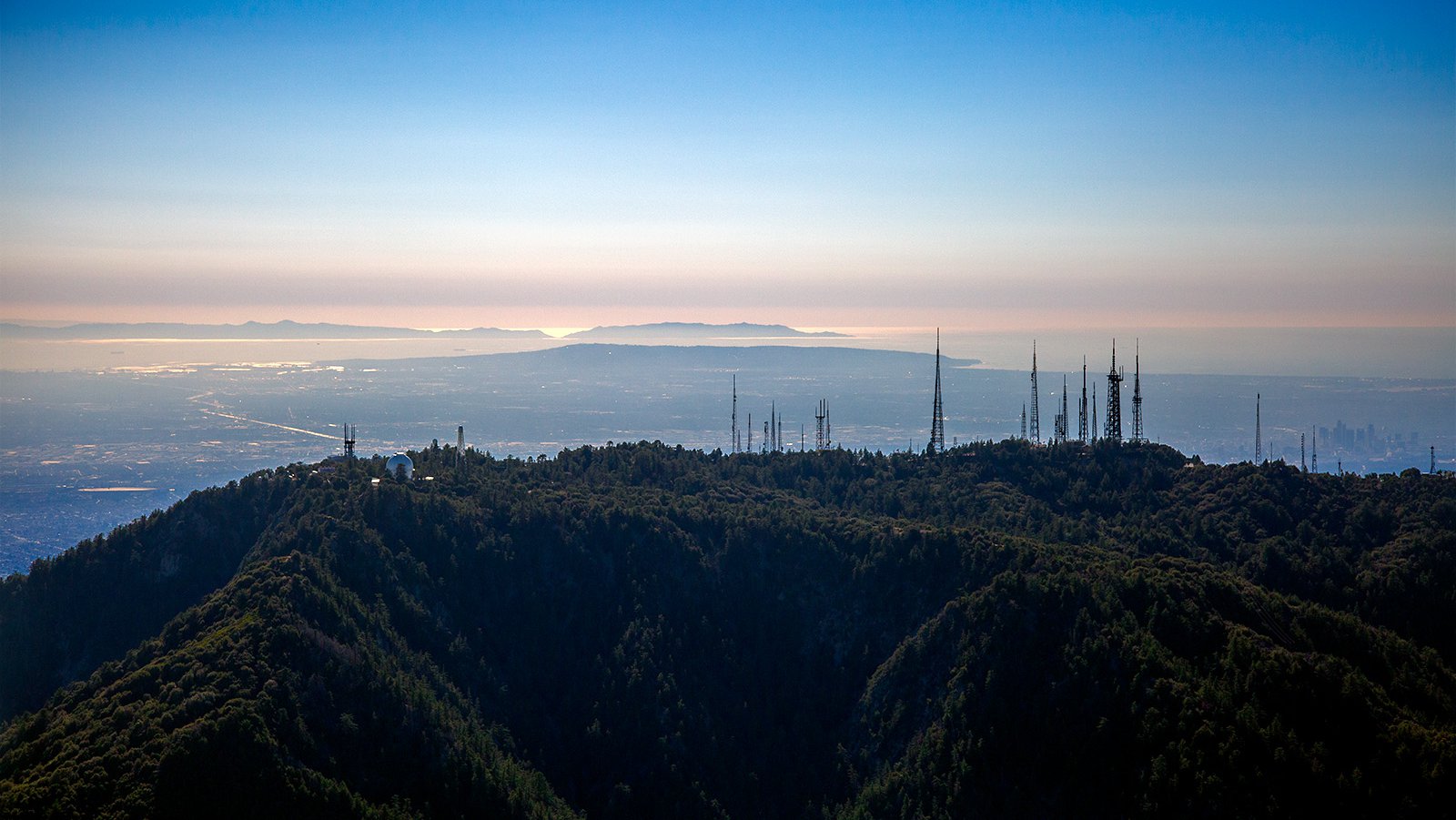
The historical Mount Wilson Observatory and its iconic Hooker and 60-inch telescopes, alongside the modern CHARA array and radio ridge antenna array, perched atop the San Gabriel Mountains overlooking Los Angeles with the stunning Santa Catalina Island visible in the distance.
The Mount Wilson Observatory stands as a monument to human curiosity and ingenuity. From its inception by George Ellery Hale to the groundbreaking discoveries made by Edwin Hubble and countless other astronomers, this historic site has been a beacon of scientific progress. As we continue to explore the cosmos and unlock the secrets of the universe, the legacy of Mount Wilson Observatory and its iconic instruments will undoubtedly continue to inspire and inform our journey into the stars.
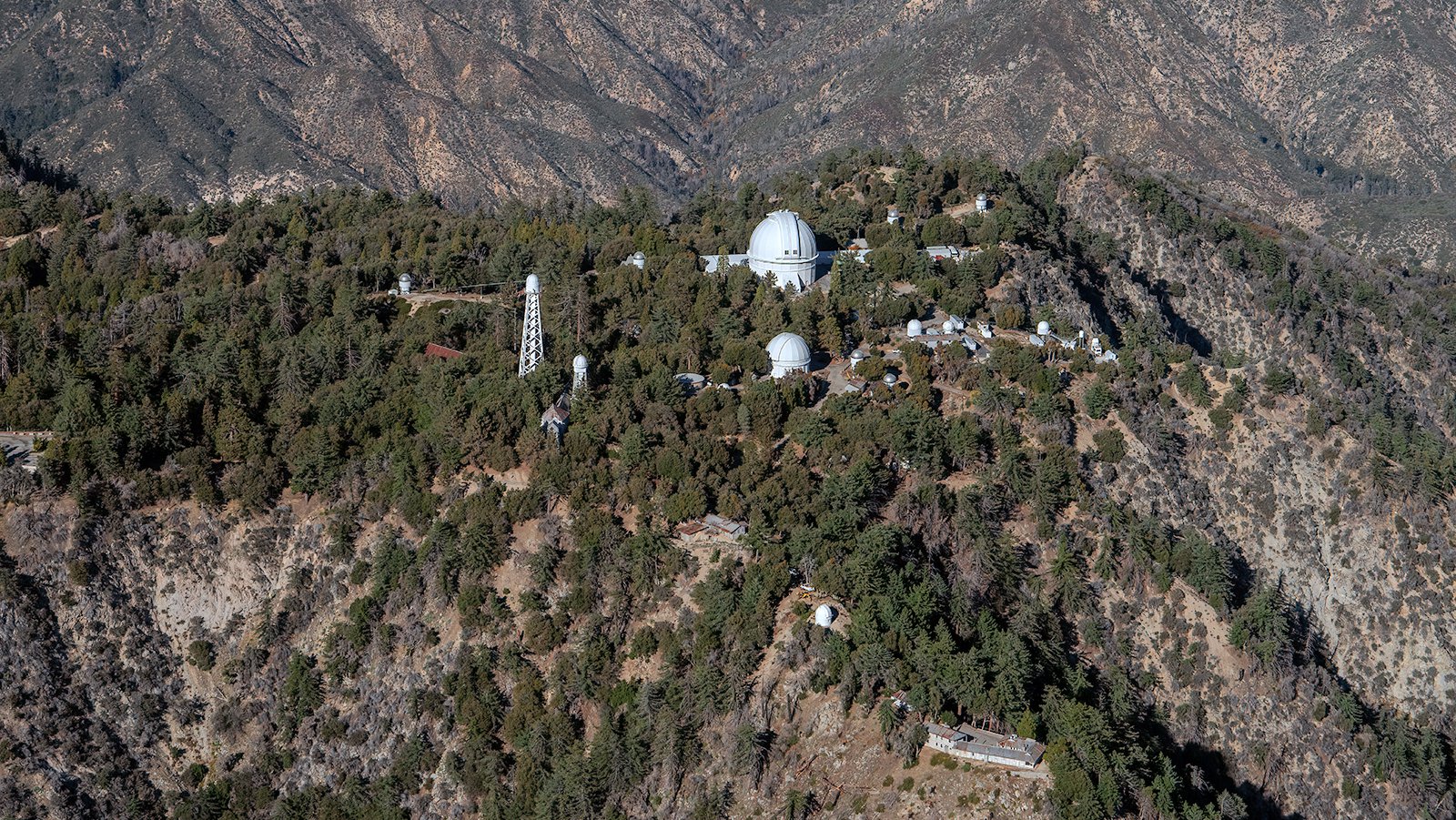
Aerial view of Mount Wilson Observatory, a historic astronomical center featuring notable telescopes such as the 100-inch Hooker telescope and CHARA array, boasting the steadiest air in North America and making it an ideal location for astronomy.